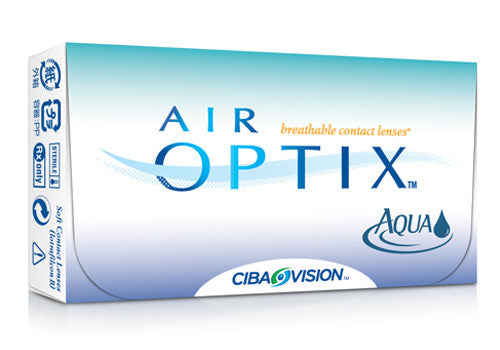
Winter brings chilly winds, indoor heating, and shorter days, all of which can wreak havoc on your tear film. For contact lens wearers, this often means dryness, irritation, and blurred vision. Understanding why winter affects your eyes and choosing the right lenses can make all the difference in keeping your vision clear and comfortable.
Winter Dry Eyes: Best Contact Lenses for the Cold Season
As temperatures drop, so does humidity. Low moisture levels, indoor heating, and cold outdoor winds accelerate tear evaporation, leaving the eyes dry and uncomfortable. Add in more screen time during shorter days, which reduces blinking, and you have the perfect setup for winter eye irritation.
The best lenses for winter dry eyes are those that retain hydration and allow oxygen to flow freely. Moisture-rich daily disposables and silicone hydrogel lenses are especially effective because they minimize buildup and stay comfortable longer. When paired with good lens hygiene and lubricating drops, these options help maintain all-day comfort.
Quick Tip: If your eyes always feel dry in cold weather, try switching to daily contact lenses that stay fresh every morning and lock in moisture naturally.
Why Winter Makes Dry Eyes Worse
Multiple environmental and lifestyle factors combine to make winter harsh on your eyes:
|
Cause |
Effect on Your Eyes |
|
Low humidity |
Cold outdoor air holds less moisture, and indoor heating dries it even further, tears evaporate faster, causing redness or burning. |
|
Wind exposure |
Strong, cold gusts strip moisture from the eye’s surface, leaving lenses feeling dry or tight. |
|
Temperature changes |
Moving between frigid air and heated rooms destabilizes the tear film and makes lenses feel sticky. |
|
Reduced blinking |
Increased screen time during dark evenings means fewer blinks and less lubrication. |
|
Seasonal allergies |
Dust and mold in sealed homes trigger irritation and dryness. |
Recognizing these triggers helps you protect your eyes and adapt your routine for healthier, more comfortable lens wear.

Key Factors to Look for in Contact Lenses During Cold Weather
Not all lenses perform the same in dry conditions. When shopping for winter-friendly lenses, focus on materials and technology designed to lock in hydration and oxygen.
|
Feature |
Why It Matters |
|
High oxygen permeability |
Silicone hydrogel lenses allow more oxygen to reach the cornea, reducing dryness and fatigue. |
|
Moisture-retaining technology |
Built-in wetting agents or water-gradient designs keep the lens surface hydrated throughout the day. |
|
Daily disposable schedule |
A fresh pair each day minimizes protein buildup and keeps eyes cleaner. |
|
Low water content (for hydrogels) |
Paradoxically, lenses with very high water content can dry faster in low-humidity air. Moderate-water designs stay moist longer. |
|
UV protection |
Winter sunlight reflects off snow, UV-blocking lenses or protective eyewear prevent exposure damage. |
Pro tip: For reliable moisture and breathability, soft contact lenses with silicone hydrogel technology are a smart pick for the cold season.
Top Contact Lens Types and Technologies for Dry Eyes in Winter
1. Silicone Hydrogel Lenses
These lenses allow five times more oxygen to reach your eyes than traditional hydrogels, helping prevent dryness and irritation. Available in daily, weekly, and monthly formats, silicone hydrogel lenses are ideal for full-day comfort. If you prefer a balance between affordability and convenience, consider weekly contact lenses for regular refresh without daily waste.
2. Daily Disposable Lenses
Daily disposables are a winter essential for many wearers. They eliminate the need for cleaning solutions, reduce deposit buildup, and offer a consistently smooth lens surface each day. This design is particularly beneficial in cold, dry climates where lenses can easily dehydrate.
3. Water-Gradient and Wetting-Agent Designs
Advanced materials now feature a water-gradient surface that feels almost like your natural tears. These lenses maintain a soft, cushiony feel throughout the day — even in heated environments or cold winds.
4. Scleral and Hybrid Lenses
For those with chronic or severe dryness, scleral lenses form a moisture reservoir over the eye, providing continuous hydration. Hybrid lenses combine the clarity of a rigid lens with the comfort of a soft edge, a great option if you need both crisp vision and moisture retention.
Practical Tips to Stay Comfortable All Season
Even with the right lenses, lifestyle changes can make or break your winter comfort.
- Stay hydrated and use a humidifier. Drink water regularly and use a humidifier indoors to counteract dryness.
- Use preservative-free artificial tears. Keep rewetting drops handy and apply them during screen time or when driving in heated air.
- Shield your eyes outdoors. Wraparound sunglasses block both wind and UV reflection from snow — check out our sunglasses collection for protective styles.
- Blink more often. Every 20 minutes, look away from your screen and blink slowly to refresh your tear film.
- Avoid direct heat. Don’t sit close to vents or heaters that blow hot air toward your face.
- Take breaks from contacts. Switch to eyeglasses in the evening to give your eyes time to recover and rehydrate.
Conclusion
Winter doesn’t have to mean dry, irritated eyes. By choosing breathable lenses and practicing healthy eye care habits, you can maintain comfort all season long. Look for moisture-locking technologies, give your eyes breaks, and stay hydrated to keep your vision crisp and clear this winter.
Ready to upgrade your comfort? Browse our list of the top contacts for dry eyes, or explore extended wear contacts to find your perfect match for winter comfort. With the right care, Winter Dry Eyes & Contact Lenses won’t hold you back from seeing every moment clearly

































